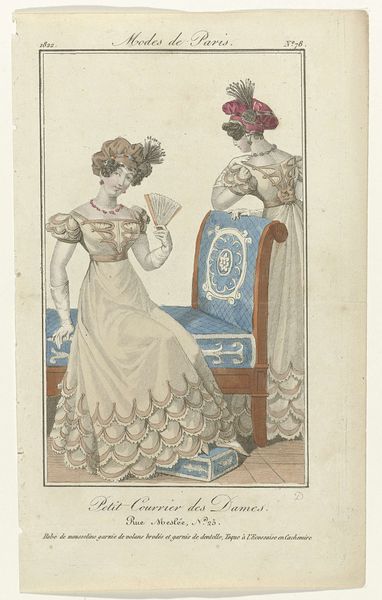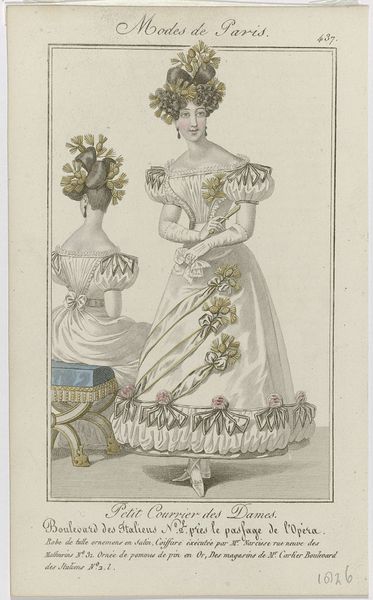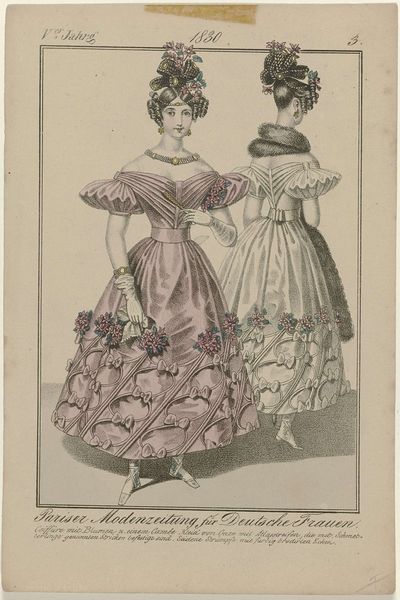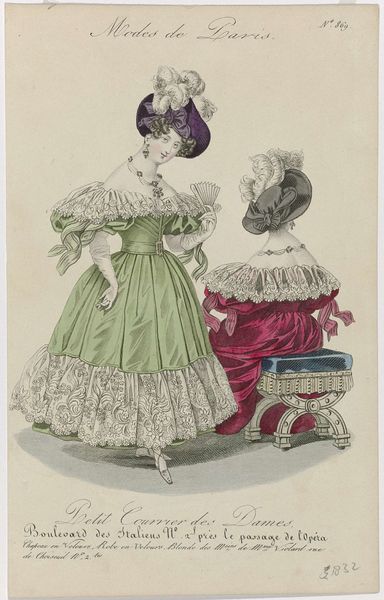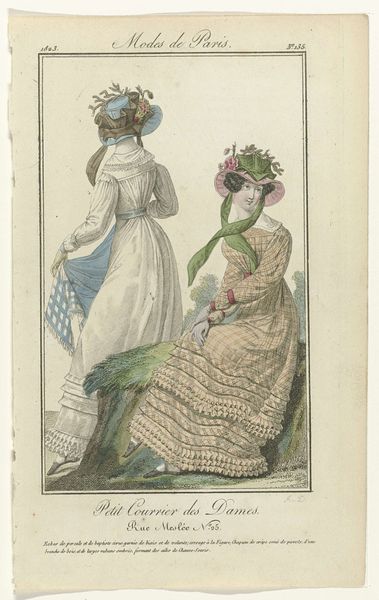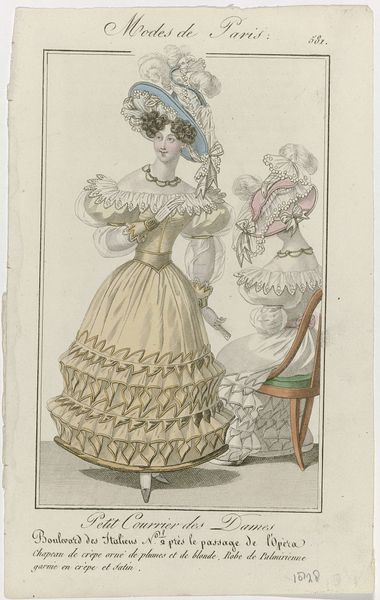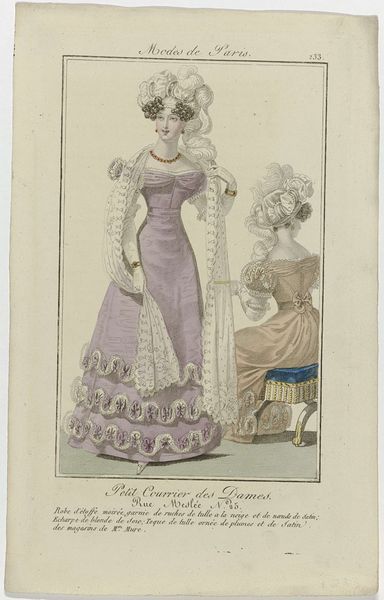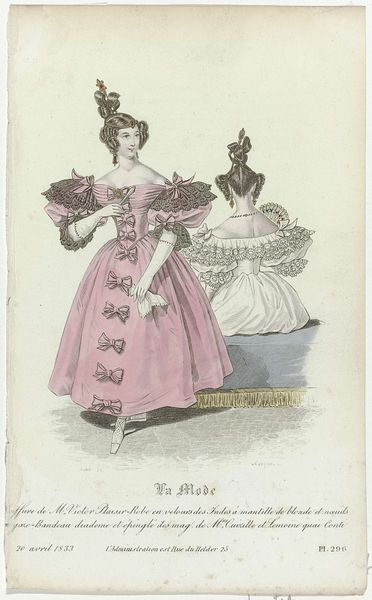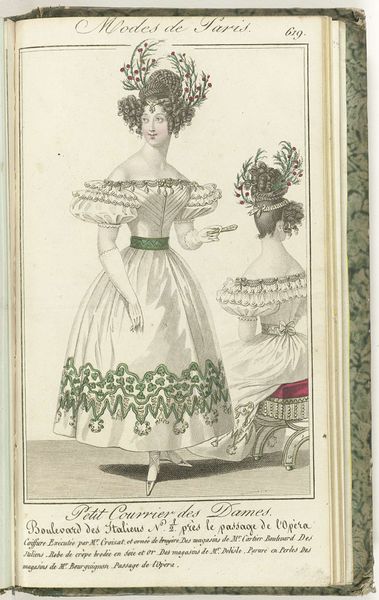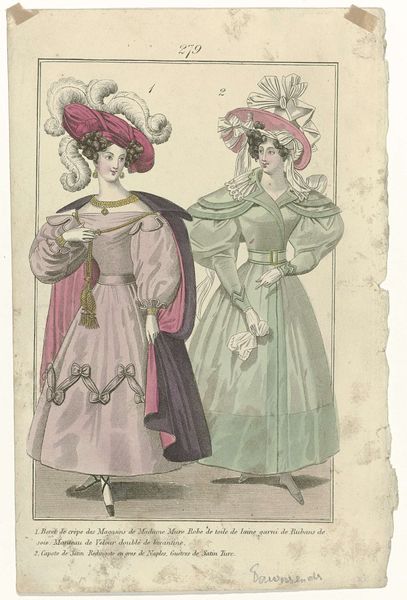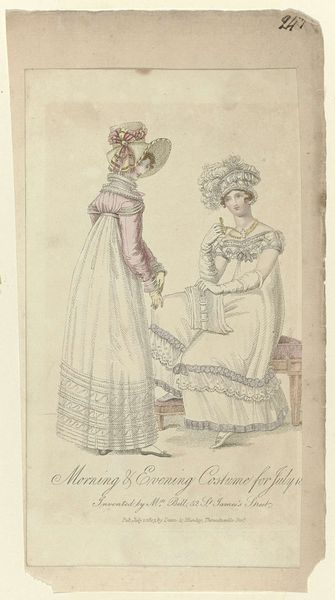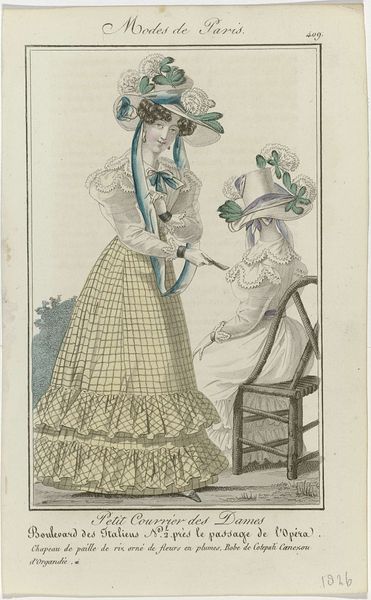
Petit Courrier des Dames, 1823, No. 176 : Robe de Tulle garnie de Ruches (...) 1823
0:00
0:00
#
portrait
# print
#
figuration
#
intimism
#
romanticism
#
genre-painting
#
history-painting
Dimensions: height 194 mm, width 196 mm
Copyright: Rijks Museum: Open Domain
Curator: Let's discuss this lovely fashion print, "Petit Courrier des Dames, 1823, No. 176: Robe de Tulle garnie de Ruches…". Editor: My immediate impression is of lightness, almost an ethereal quality. The soft colors and delicate lines suggest an idealized vision of femininity. Curator: Absolutely. We're looking at an object intended to circulate within elite social strata, solidifying standards of beauty, class, and even domesticity. Fashion prints played a crucial role in disseminating Parisian styles, impacting expectations and influencing social performances in the 19th century. Editor: The composition guides the eye expertly. Notice the placement of the figures—one seated, one standing—creates depth. And the artist uses these delicate curves and fine lines to describe every last bit of lace. Curator: What strikes me is the clear distinction made by the image, which offers us not just aesthetic pleasure but a specific social instruction regarding appropriate adornment and posture. The poses and apparel exhibited served as symbols, embodying societal hierarchies and cultural values. Editor: Semiotically, the emphasis on detail translates into an admiration of lavishness. Note also how the relatively high contrast in shading adds a sense of dynamism despite its clear, diagrammatic presentation. Curator: The gazes are significant; the seated figure's demure look invites a sense of aspiration. One has to recognize the constraints placed upon women’s expression while analyzing this visual language of fashionable ideals. Editor: I see how that connects—it really brings out these questions around representation in portraiture as its own form. Focusing in again on the colors now, one notes the artist achieves considerable tonal variety and contrast working only with pastel hues of reds, greens, and whites. Curator: These prints become windows into understanding the expectations and roles prescribed to women of a particular class and period. Editor: Thinking about line, shade, color, the object operates as an object of idealized femininity. It shows me how people during the Romanticism valued it and idealized beauty at the time. Curator: The intersection of fashion, gender, and class in visual representation offers such richness. Thank you for illuminating different details here. Editor: My pleasure! Seeing art through multiple lenses is always so worthwhile, isn't it?
Comments
No comments
Be the first to comment and join the conversation on the ultimate creative platform.
